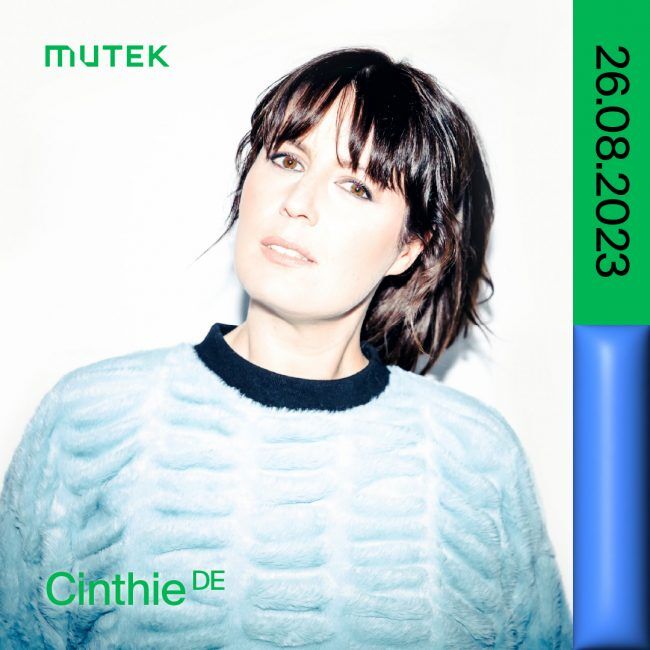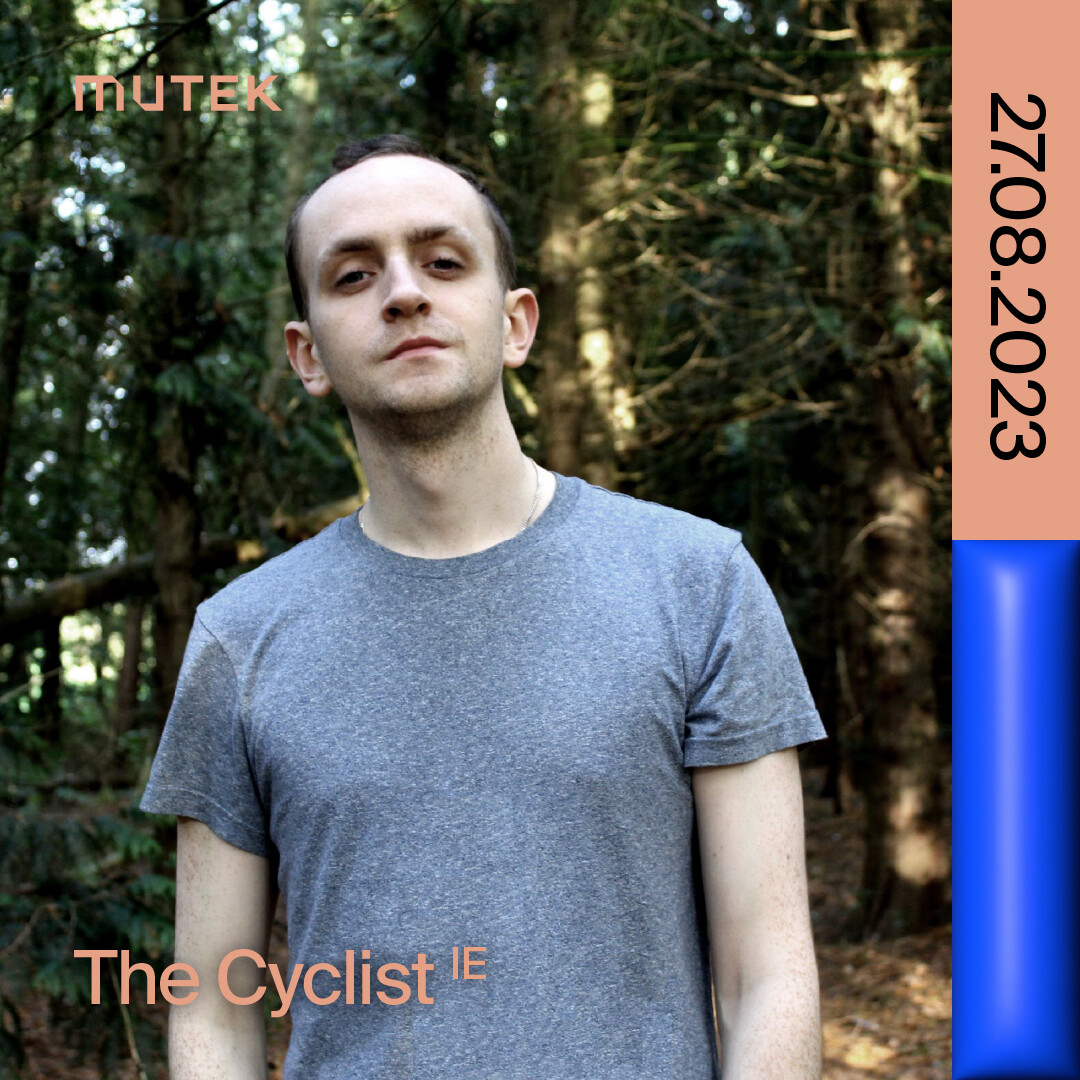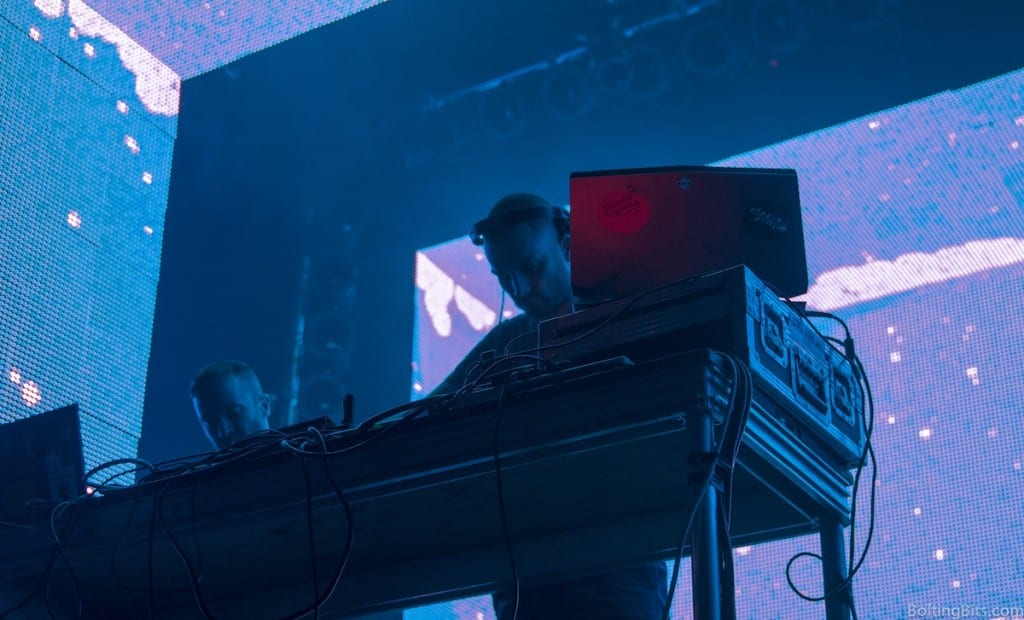 Lakker is a very particular project. While participating in a very central way to the aesthetic revolution around the techno scene that has been unfolding in the last few years, informed by both late 70’s/80’s industrial, EBM and the deep mark the early dubstep scene left both in it’s birthplace in the UK and Germany and spilling over to the rest of Europe; Lakker represents that collision of new and old ideas perfectly yet they seem to be total outsiders and absolutely don’t fall in the trap of formatting their sound to what is hype today.
Lakker is a very particular project. While participating in a very central way to the aesthetic revolution around the techno scene that has been unfolding in the last few years, informed by both late 70’s/80’s industrial, EBM and the deep mark the early dubstep scene left both in it’s birthplace in the UK and Germany and spilling over to the rest of Europe; Lakker represents that collision of new and old ideas perfectly yet they seem to be total outsiders and absolutely don’t fall in the trap of formatting their sound to what is hype today.
Their show at Mutek was a perfect example of this. When much of the scene relies on a grittier-than-thou aesthetic Lakker’s live sounded quite expansive and full bodied. Every sound felt deeply thought-out to create a rhythmically diverse yet entirely hypnotic brand of pure body music. They stunned the senses, bypassing the brain to go straight to the body. The effect: dizzying. The experience was so powerful that it took us a good break after the end of their show to be able to appreciate anything else. Another notable particularity was the perfect pacing of their programming of the set where every event seemed to happen exactly at the perfect time. Their knack for syncopation, their taste for the epically sinister and the overall quality of their sound (plus a very intelligent programming of the night by the festival) made it one of the highlight of the festival for me.
We sat down earlier in the afternoon prior to their set to discuss the roots and refinement of their sound, their two last albums released in the span of two years and the evolution of the project. We met two down to earth, humble yet extremely articulate and deep individuals.
You guys have been working together for quite some times (13, 14 years), with very diverse roots (Industrial, Metal, Techno…).
Ian : Maybe even more than that actually, more than 15. We were and still are into loads of different stuffs. We tried to bring it all into what we did at the start, that’s all in there somewhere.
If at first (say first album) your sound was very diverse you seem now to have a very cohesive palette, how did that come about?
Ian : We tried to focus a few years after the first album. We changed our aesthetic slightly; just refining and focusing a bit more. The first album is bit dense I think, a lot of ideas and a lot of sounds. And even in the actual mix of the tracks. Going back we were noticing that some very good sounds were buried in the mix because there was too many ideas, we were just trying to do too much. So we felt we needed to refocus.
Dara: I think it also came from the realization that we weren’t really DJing our own tunes [laughs]. Not that it has to be the main reason, but we thought “Why is that?”. The stuff we were creating was changing all the time and there would be an idea and then “we need to cram more ideas in there!”. We kept doing that and then we found that when we took individual ideas, stretched them out and focus on each one, we could find out which was the best. I remember reading and interview with Richie Hawtin where he said “There is 48 channels on a mixing desk, which 40 do you mute?” and I remember liking that idea. With electronic music you can add so much even from one single source, especially with two people working, so then it’s about pairing down.
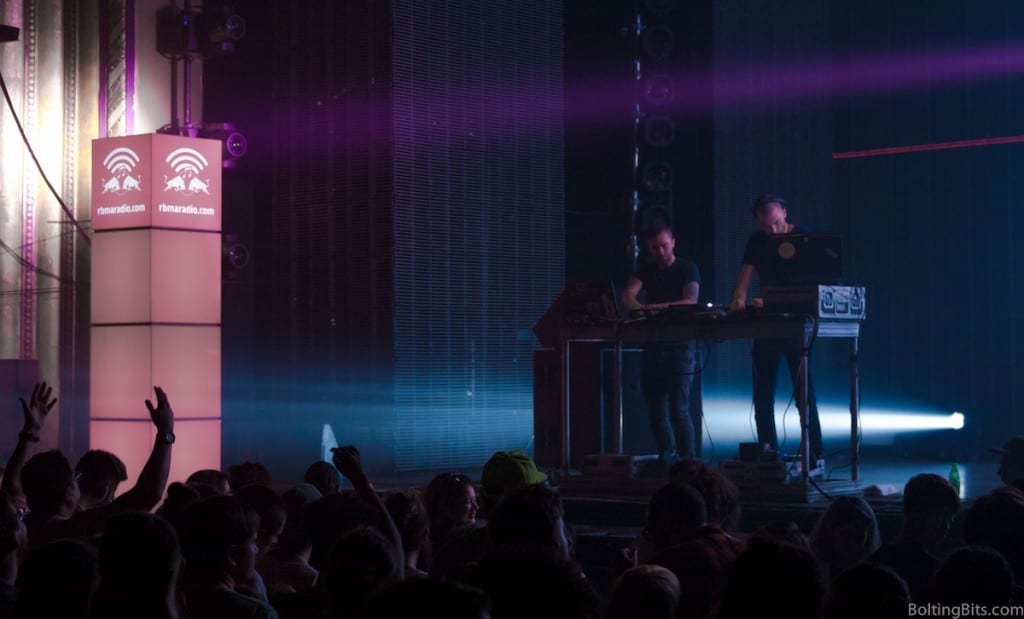 A bit like sculpture in a way having a chunk of material and removing, chopping off to find the form and the essence of what you’re after…
A bit like sculpture in a way having a chunk of material and removing, chopping off to find the form and the essence of what you’re after…
Dara: Exactly…
Ian: Yeah, I think we approach our music very much in that way: sculpting and refining. It’s a cliché to say less is more but that’s a thing that many artists, many musicians, go through; start somewhere and try to refine it. But as you get older as a person, you kinda want to go to the heart of things a bit more, you want to just refine what the focus of what you’re doing is and get to the essence. So when we did this first album we wanted to do a bit of everything…
Dara: I think it’s alright though, in some ways it helped us become who we are, because it gave us that freedom to experiment lots of different sounds, lots of different styles and from producing different type of music you learn an array of different techniques, so when you refine your style then you have all these different set of tools. That really helps.
There were 8 years between the releases of Ruido and Tundra, why the gap? Did you have your hands full with producing 12’’ ?
Dara: Immediately after the album, a strange coincidence made that we both decided to go away for a year each. I went away travelling and then when I came back Ian went away travelling, and then moved to Wellington for a while. So there were nearly three years before we got back together to do music. But at this point we already had worked together for a long time, so when we got back…
Ian: We re-assessed what we were about and what we were going to do. Ruido was just a couple of things but there is a load of unreleased stuff from back then in so many different styles
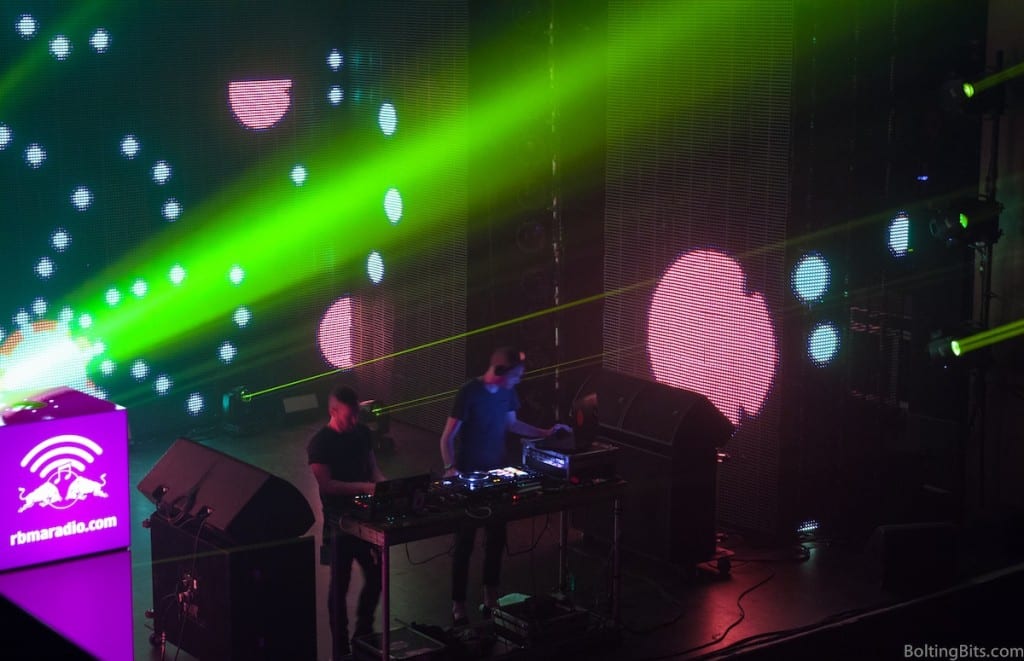 The Lakker lost tapes [laughs]…
The Lakker lost tapes [laughs]…
Both: Yeah! [laughs]
Dara: Hopfully they remain lost [both laugh]
Ian: It goes from cheesy breakcore to ambient stuff…
Dara has been DJing since he was a kid and he taught me everything about it; then I kinda stopped since we were so busy producing. But during my travels I got back into it and when I came back I really wanted to produce tracks I could play in my DJ sets. I really want to make interesting music that still works in the context of a club. And we really were feeling the same way about that so we headed this direction and focused on making twelve inches. We also didn’t want to work on an album until we felt the need for it. We wanted to work on an aesthetic we both had in mind, we wanted to develop it,
Dara: We wrote it down, in a manifesto: “This is what we want, this is where we are going, this is what we want to bring to the table, these are the things we want to learn” That period of releasing EPs was great, it was a period of refining and then finally we realized that we had enough material and a vision clear enough of our sound…
Ian: Clear enough for us to work on another album that would be representative of that sound. And that was Tundra.
You released two albums in the last two years (which is quite an achievement), do you find yourself less inclined to aim at the dancefloor nowadays? Has this shifted your interest?
Ian: A little bit maybe but we still approach a lot of our music now in a very beat heavy way. There are a lot of repetitive rhythms in there. But we might have a different view of what works on a dancefloor than other people. We write stuff that we feel will work in a club context; sometimes it does and sometimes it doesn’t. We never feel we write straight dancefloor music.
And then it’s up to the DJ to make it work…
Both: Yeah!
Ian: But I think, less and less, we’re thinking of it as music for DJs. It’s more music that works in that kind of context and that can, hopefully, work in both listening and club context.
Dara: It has to work in our live set. We see our live set more as a gig than just a seamless DJ mix that has to happen over eight hours. We are seeing it more as going to see a rock band, where you would just go, the performance starts, if you want to dance that’s great and if you want to just stroke your chin, you know [all laugh] that’s ok as well.

This last album was quite conceptual. Can you explain how you were approached by Re:Vive to create a work on the relation between the dutch & water?
Ian: They approached us. We were like guinea pigs for this project they had started that connects different archives from around the world with artists so that the material in those archives doesn’t sit there as data and that it can be reinterpreted and re-contextualized. I think that when the member of the organization saw us play at Atonal last year in Berlin, they liked what we did and the work on Tundra…
Dara: Read about us on Pitchfork as story tellers…
Ian: … that we use a lot of found sounds, and that our music is sample heavy, they figured we would be a good fit for what they are trying to do. So they invited us over to do this residency in Hilversum in the Netherlands, to take material from the archive there and to rework it, which eventually became “Struggle & Emerge”. Because there was so much material in the archive, we asked if there would be some ways of narrowing it down…
Dara: so they offered us a few themes and this one spoke to us both the most.
Ian: the material in the archive linked to this theme was also really amazing, lots of sounding of water, machinery, news footage where you just hear these amazing sonic artefacts, so we thought “Yeah, we can definitely work with that material”
You seem to have approached the subject on the theme of menace/fear, fear of gigantism. We are little things compared to this mass amount of water. Why do you think ? Is this your industrial/metal roots ? The revenge of Nature on presomptuous humanity? Was it conscious or did it just happen naturally?
Ian: I think it was quite conscious, for me anyway, from being there and talking to the people and just the scale of the things, yeah: small man, massive ocean (massive planet). We are helpless if a natural disaster of a massive scale happens, we are doomed, and that’s ok.
Dara: It was interesting how the project happened; there was a period where we got brought into the Netherlands and they showed us a bunch of engineering works and we got to see the scale of everything and then we met everybody from professors to engineers, art historians. That was a great period of learning for us. Then, I had a bit of a problem, how are we going to be able to relate all the data to the music and come up with a concept. But you [Ian] were good in saying “We immersed ourselves into all that information, now let’s just put that aside and just write the music with these amazing samples”. And once we did that, it was great, it all just came together naturally and then once you look back you see all the links.
Ian: It’s like it can’t help but come back into the music somehow. You immerse yourself so much and you have your personal reactions and emotional responses to it and that comes back through the music. And the guys from Re:Vive pointed at connections that were made in the music: sample choices, certain aspects of the story all linked up. It was a strange synchronicity with the project now that we look back on it because it was not conscious.
 So they accompanied you with the process?
So they accompanied you with the process?
Dara: After the residency there, for four days they showed us all the archive itself and then when we met the different professors and historians, etc. We wrote some of the music there and then we went back to our studios and we wrote the rest of it and we went back to them and then they put this huge amount of work to get into the tracks, write all the sample sources and they made this mini website that goes through all that stuffs.
Ian: They want to make it a regular thing now where they invite artists to come to the archives and work from that, and not only in the Netherlands but all over the world.
[soundcloud url=”https://soundcloud.com/r-srecords/lakker-maeslantkering-gating” /]
You seem to have found a solid base in R&S records.
Ian: Yeah, since we did the first release with them (Containing A Thousand EP) we released everything on R&S. We still got selected for the [forthcoming] Blueprint compilation.
Dara: R&S are so open-minded we can send them anything and, since it’s such a varied label, there’s no style we need to comply to. That really suits us.
Ian: We have released on a few techno labels and that great but we don’t really see ourselves as a techno act.
Dara: When R&S id their showcase it was such a varied thing. We didn’t wanted to feel like the one weird live acts stuck in a big load of DJs in a long techno night. That’s fine if we’re djing…
Ian: They have been really supportive. They pushed us to kind of experiment, own our sound even more. It’s really cool.
 It’s crazy looking back at their morphosis along time, from rave forefront label to when they came back around 2008/2009… it was really a daring come back, taking a lot of stylistic risks.
It’s crazy looking back at their morphosis along time, from rave forefront label to when they came back around 2008/2009… it was really a daring come back, taking a lot of stylistic risks.
Ian: Yeah, they came back with stuff like Pariah, James Blake and all these interesting new artists…
Dara: And they’ve got a lot of new exciting stuff s coming up as well, it’s an exciting place to be.
How does it feel to be releasing on such a stronghold of electronic music/rave culture?
Dara: Well there were so many of their records in our collection before we released on their label. It’s basically one of these label that when you see their logo you would buy on sight.
Ian: Joey Beltram, the Aphex stuffs… yeah.
Dara: Blueprint as well, that was one of the nice things to sign with them because I used to be a super obsessive UK techno fan with the whole Sheffield, Birmingham sound in the 90’s, all the early James Ruskin, Surgeon and all that sorts of stuff so that’s why for us it’s been amazing signing with all these labels that really influenced the start of our career and now they’re still going and doing interesting stuff.
Ian: And Blueprint also did kinda reinvent themselves at some point and re-energized themselves along the road. They’re really pushing new artists and trying to find interesting music and the compilation that is coming next is really amazing, some really good stuff on there.
How did this come about? Did these labels approach you or…
Dara: The very first thing we did was with Killekill, they’ve been great to us as well.
Ian: And then Stroboscopic Artefacts contacted us after that (Lucy wanted to do something but the year after) and then James Ruskin (Blueprint) got in touch and asked us if we wanted to do something, and of course we wanted [laughs]… so we sent them a bunch of tracks and then he was really into all of them so these became the first and second Blueprint release, it was really cool for us to get that support early on from people like James Ruskin.
Dara: And he didn’t just pick the straight up stuff…
Ian: it was kind of a lucky combination because it was a time where we were trying to speed up our releases rate and he was kind of trying to branch out the sound of Blueprint from just straight up dancefloor techno; so that was the perfect opportunity for both him and us to release some stuff.
Was rave culture a big thing in Ireland as well?
Ian: It was big, though I was probably too young to be involved, I was more on the sideline living it through my older brother. He would go to raves, listening to pirate radio stations, and I was just hearing the stories because I was only 13 or something like that when it was really kicking off so I couldn’t really immerse myself. But it was always a dream for me.
Dara: Actually Dublin, in the late 90’s, was this really cool place for clubbing. People used to come from all over Europe to go to some of the clubs there. There were a couple of really good ones and a really exciting atmosphere for a while. There was this festival called the DEAF Festival, there were some electronic arts festivals with people from all over the world. That’s when we just started to get into things, we were just old enough to get into clubs when that was happening. Plus in Dublin people are so supportive. No weird hierarchy of who will or won’t talk to you and all that kind of stuff. It was a good place to start in definitely.
How has this live project emerged and developed?
Ian: There is a lot of Tundra material in the live we’re doing tonight and we worked in a few Struggle & Emerge stuff as well, but we do have a separate A/V show around this last album, but since it’s a bit more of a club environment tonight we decided to do more of a mixture of stuff. But overall it’s been a gradual process of trying to tweak and just learn as we play what works..
Dara: The hardest thing with electronic music is making the music you spent hours in the studio crafting, better live. It’s a really difficult thing to do. To present your music in a more interesting way live is really challenging. But over the years we are starting to get to a place where we know which parts to leave and which parts to improvise with, we have a much better flow to the set. We divided the responsibilities a little bit, a bit better…
Ian: We like to present it as an audio visual show better than just a show and that helps to kinda broaden it as well. Also defining the role with Dara taking care of the visuals helped us each be more focused on our role…
Dara: Ian does the main part of the music and I’m kind of doing a little bit of sound design, tinkering around with sounds and doing the visuals. It’s a lot more stress free because we then both have our focus area to work on.
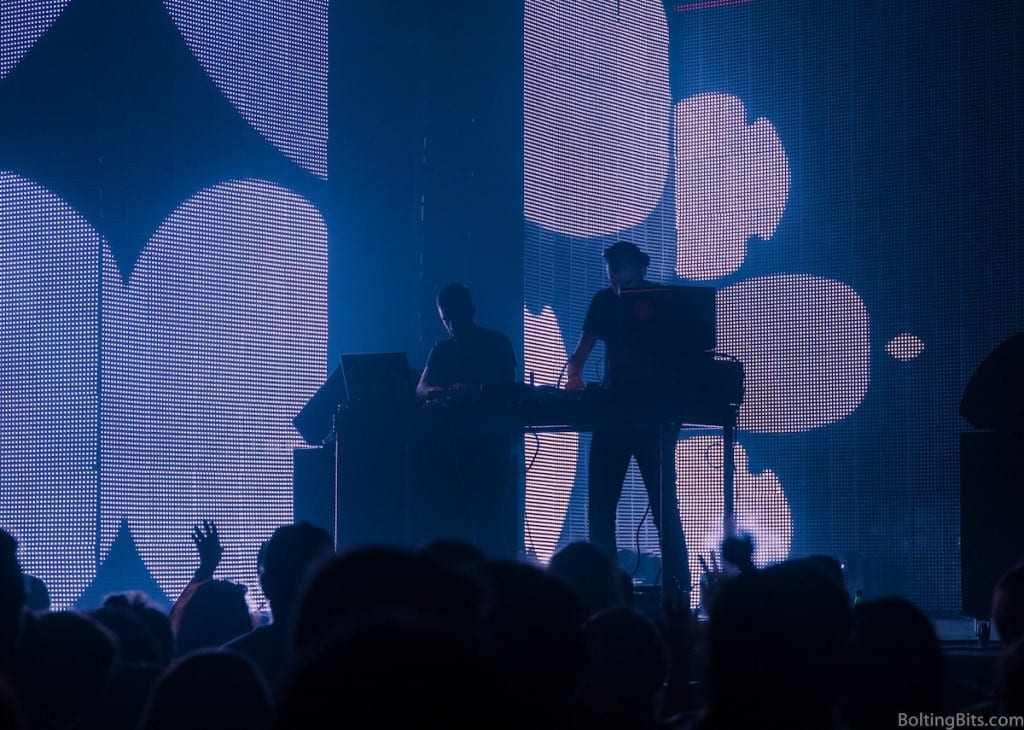 You seem to have some pretty clear idea of what you wanna do with visuals both for releases and live show. Are you guys taking care of this task yourself ?
You seem to have some pretty clear idea of what you wanna do with visuals both for releases and live show. Are you guys taking care of this task yourself ?
Dara: For the releases? Yeah… well actually for Tundra my girlfriend drew the cover. But for some of them I do. I come from a motion design background so…
Ian: You did the Spider Silk center logo…
Dara: I do all the videos and stuff like that… but there comes a point where it just becomes too much work. And I really like other people’s design.
Thank you so much for the interview!! What’s next for you guys ?
Ian: I think we won’t focus on releasing for a while. We just want to do lives for now and then do the Struggle & Emerge A/V show…
Dara: We we might try and develop some sort of installation-based thing for that project as well. So we’re working with that at the moment. And then we’re pretty much going to try to have a kind of blank space for a while because we felt like we were writing to deadlines a lot and…
Ian: We did releases on releases on releases and we feel we need to take a little break and come back in the studio…
Dara: … and just have nothing to do. I’m looking forward to spending a month tinkering with sounds and just like researching stuff that have just been put by the wayside due to the deadlines and gigs and stuff like that. Hopefully something good will come out at the end but we’re not thinking, “Ok, we’re going to write an album”. Ian has got some really exciting solo stuff coming up as well…
Ian: Eomac.
Dara: we’re really excited about that!

Interview by Bowly
Photo: Sarah-Marie

